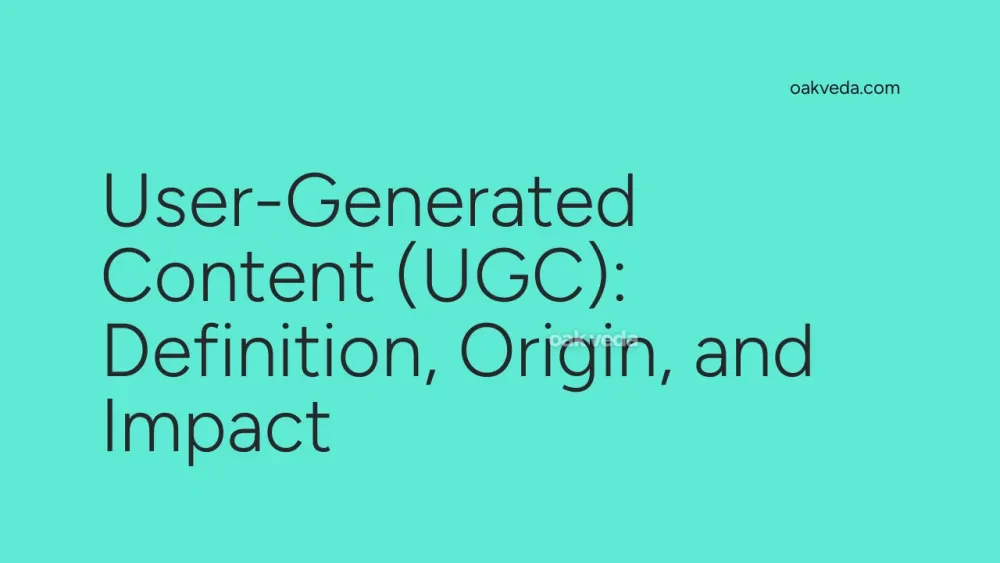
What is User-Generated Content (UGC)?
User-Generated Content (UGC) refers to any form of content created and shared by consumers or end-users of a product, service, or platform, rather than by professional creators or the brand itself. This content can range from social media posts and product reviews to photos, videos, and blog articles. UGC has become a powerful force in the digital landscape, shaping how brands interact with their audiences and how consumers make purchasing decisions.
Origin and Development of UGC
The concept of UGC has been around since the early days of the internet, but it gained significant traction with the rise of Web 2.0 in the mid-2000s. Platforms like YouTube, launched in 2005, and social media giants like Facebook and Twitter, which gained popularity in the late 2000s, provided users with unprecedented opportunities to create and share content.
As smartphones became ubiquitous and social media platforms evolved, UGC exploded in volume and variety. Today, it's an integral part of the online experience, with platforms like Instagram, TikTok, and Pinterest built almost entirely around user-created content.
How UGC Works
UGC works by leveraging the creativity, experiences, and opinions of consumers to create authentic and relatable content. Here's how it typically functions:
- Creation: Users create content related to a brand, product, or service.
- Sharing: This content is shared on social media, review sites, or other platforms.
- Amplification: Brands may reshare or promote this content, increasing its reach.
- Engagement: Other users interact with the content, creating a ripple effect.
- Influence: The UGC influences other consumers' perceptions and decisions.
Types of UGC
User-Generated Content comes in various forms, including:
- Social Media Posts: Photos, videos, or text posts on platforms like Instagram, Facebook, or Twitter.
- Reviews and Ratings: Customer feedback on products or services.
- Blog Posts and Articles: In-depth content created by users about their experiences.
- Videos: Unboxing videos, tutorials, or product demonstrations on platforms like YouTube or TikTok.
- Photos: User-submitted images of products in use or experiences with a brand.
- Forum Discussions: Conversations and Q&As on platforms like Reddit or Quora.
Popular Examples of UGC
Several brands have successfully leveraged UGC in their marketing strategies:
- GoPro: The action camera company regularly features user-submitted videos and photos in their marketing campaigns.
- Airbnb: The platform encourages users to share photos and stories from their stays, creating authentic travel content.
- Coca-Cola's "Share a Coke" Campaign: Personalized bottles prompted users to share photos with their named Coke bottles.
- Starbucks' White Cup Contest: Customers were invited to decorate their cups and share photos, with the winning design featured on a limited edition cup.
Impact of UGC on Social Media Culture
UGC has profoundly impacted social media culture in several ways:
- Authenticity: It has fostered a culture of authenticity, with users valuing real experiences over polished brand messages.
- Democratization of Content: Anyone can now create and share content, challenging traditional media hierarchies.
- Community Building: UGC helps create communities around brands, products, or shared interests.
- Influencer Culture: It has given rise to influencer marketing, where everyday users can build large followings.
Controversies Surrounding UGC
While UGC offers many benefits, it also presents challenges:
- Copyright Issues: Questions about who owns UGC when it's shared on brand platforms.
- Quality Control: Brands must navigate how to manage potentially inappropriate or low-quality content.
- Privacy Concerns: The use of UGC in marketing raises questions about user privacy and consent.
- Fake Content: The rise of manipulated or entirely fabricated UGC poses trust issues.
How Brands and Influencers Use UGC
Brands and influencers leverage UGC in various ways:
- Social Proof: Showcasing real customer experiences to build trust.
- Content Creation: Using UGC to supplement their own content creation efforts.
- Customer Insights: Analyzing UGC to understand customer preferences and pain points.
- Engagement: Encouraging UGC creation to boost engagement and foster community.
- Advertising: Incorporating UGC into paid advertising for more authentic messaging.
Future Trends Related to UGC
Looking ahead, several trends are shaping the future of UGC:
- AI-Powered UGC: AI tools will help in curating, moderating, and analyzing UGC at scale.
- Augmented Reality UGC: Platforms like Snapchat and Instagram are enabling AR-enhanced UGC.
- Blockchain for UGC: Blockchain technology may help address issues of ownership and authenticity in UGC.
- Video-First UGC: Short-form video content, popularized by TikTok, is becoming increasingly dominant.
- UGC in E-commerce: More integration of UGC directly into online shopping experiences.
FAQs about User-Generated Content
-
Is UGC free for brands to use? While UGC is created by users, brands should always seek permission before using it in their marketing efforts.
-
How can brands encourage UGC? Brands can encourage UGC through contests, hashtag campaigns, and by actively engaging with and sharing user content.
-
What are the legal considerations for UGC? Brands must consider copyright laws, privacy regulations, and platform-specific terms of service when using UGC.
-
How does UGC impact SEO? UGC can positively impact SEO by increasing fresh, relevant content and improving engagement metrics.
-
Can UGC be negative for brands? While UGC is generally positive, negative reviews or content can impact a brand's reputation, highlighting the importance of proper management and response strategies.
User-Generated Content has revolutionized the way brands and consumers interact online. As digital platforms continue to evolve, UGC will undoubtedly play an increasingly crucial role in shaping online experiences, marketing strategies, and consumer decision-making processes.
You may be interested in:

